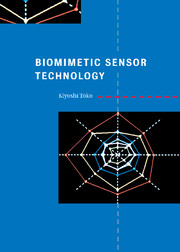2 - Chemical senses
Published online by Cambridge University Press: 23 October 2009
Summary
Chemoreception
The senses of taste and smell are the chemical senses induced when chemical substances interact with the tongue and the nasal cavity, respectively. Physical quantities such as light (photon), sound wave and pressure (or temperature) are received in the senses of sight, hearing and touch, respectively, as shown in Table 1.1.
Chemoreception occurs even in unicellular organisms, although some living organisms such as deep-sea fish have no sense of sight among the physical senses. Protozoa such as amoebae and microbes such as colon bacilli show chemotaxis; they gather and escape from some chemical substances. The former is called positive chemotaxis and the latter negative chemotaxis. Colon bacilli show positive chemotaxis for amino acids tasting sweet and negative chemotaxis for chemical substances tasting strongly bitter or sour. This behavior is quite reasonable because substances tasting sweet become energy sources for living organisms whereas substances tasting strongly bitter or sour are often harmful.
As the above examples indicate, our likes and dislikes for chemical substances (i.e., foodstuffs) can be considered as an essential matter related to our safety. The senses of taste and smell are those used for checking the safety of substances that are ingested, and hence they have developed in higher animals in the same way as in unicellular living organisms that survive using chemical senses. The development of taste and odor sensors is a growing area of biomimetic technologies intended to mimic the original purpose of biological systems.
- Type
- Chapter
- Information
- Biomimetic Sensor Technology , pp. 26 - 39Publisher: Cambridge University PressPrint publication year: 2000



